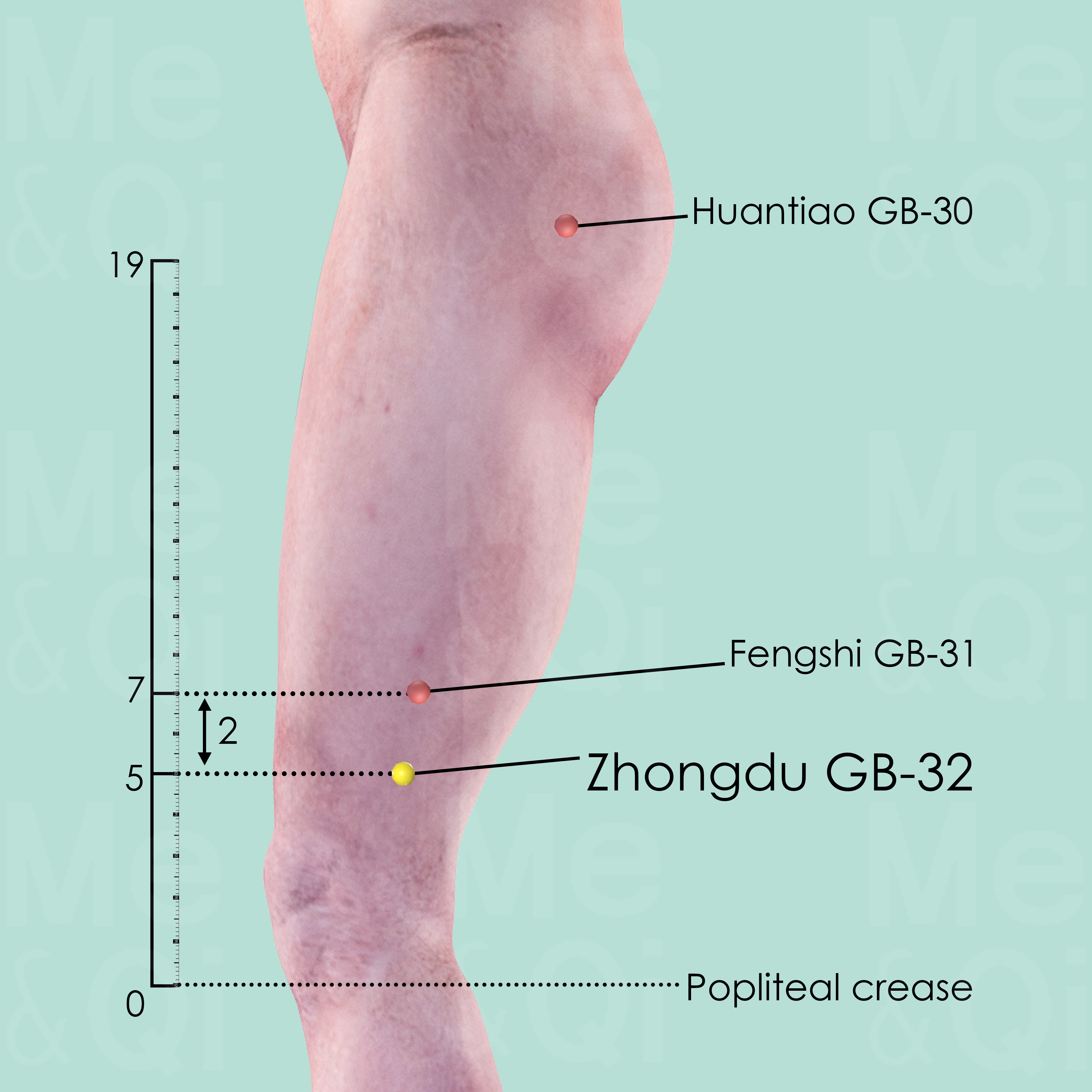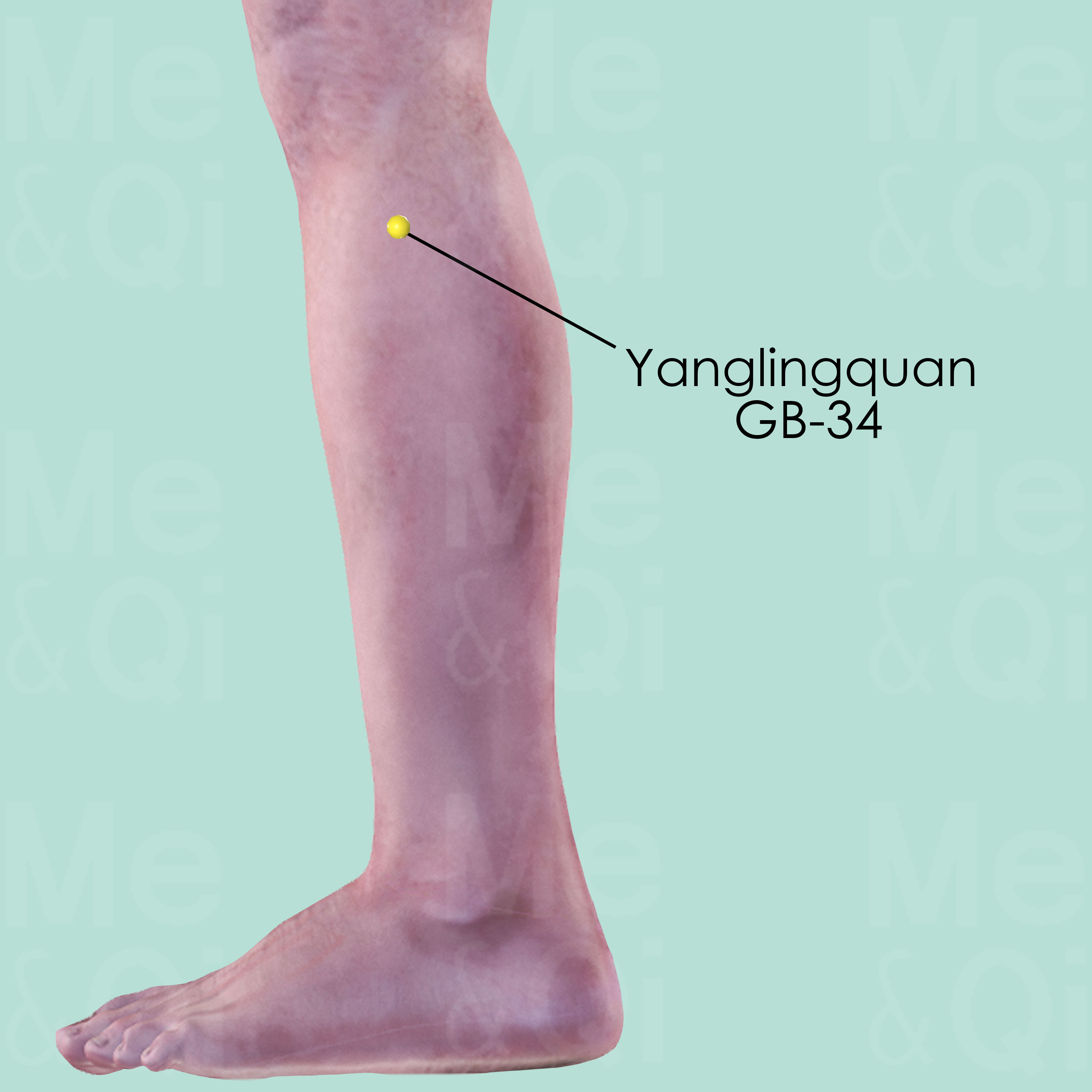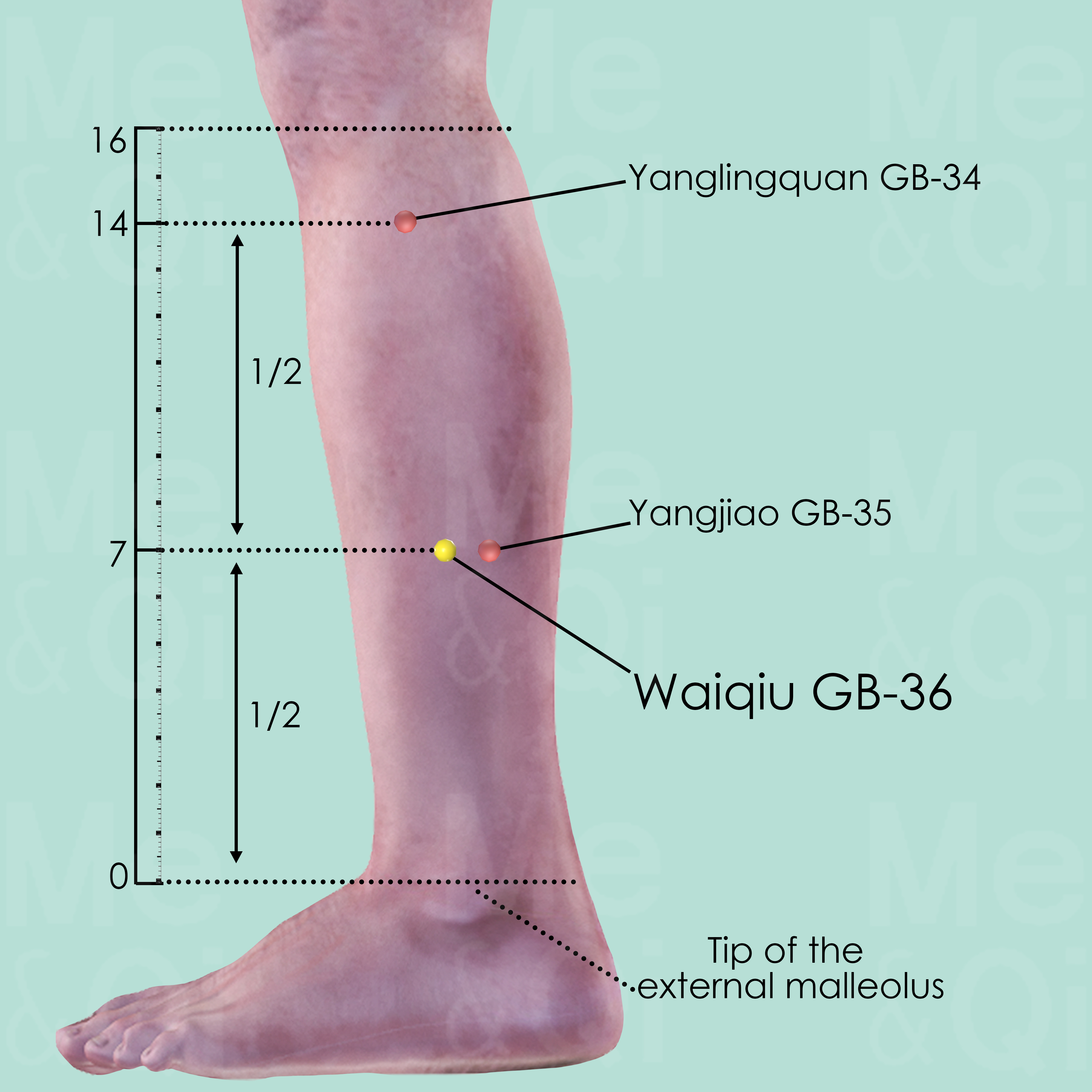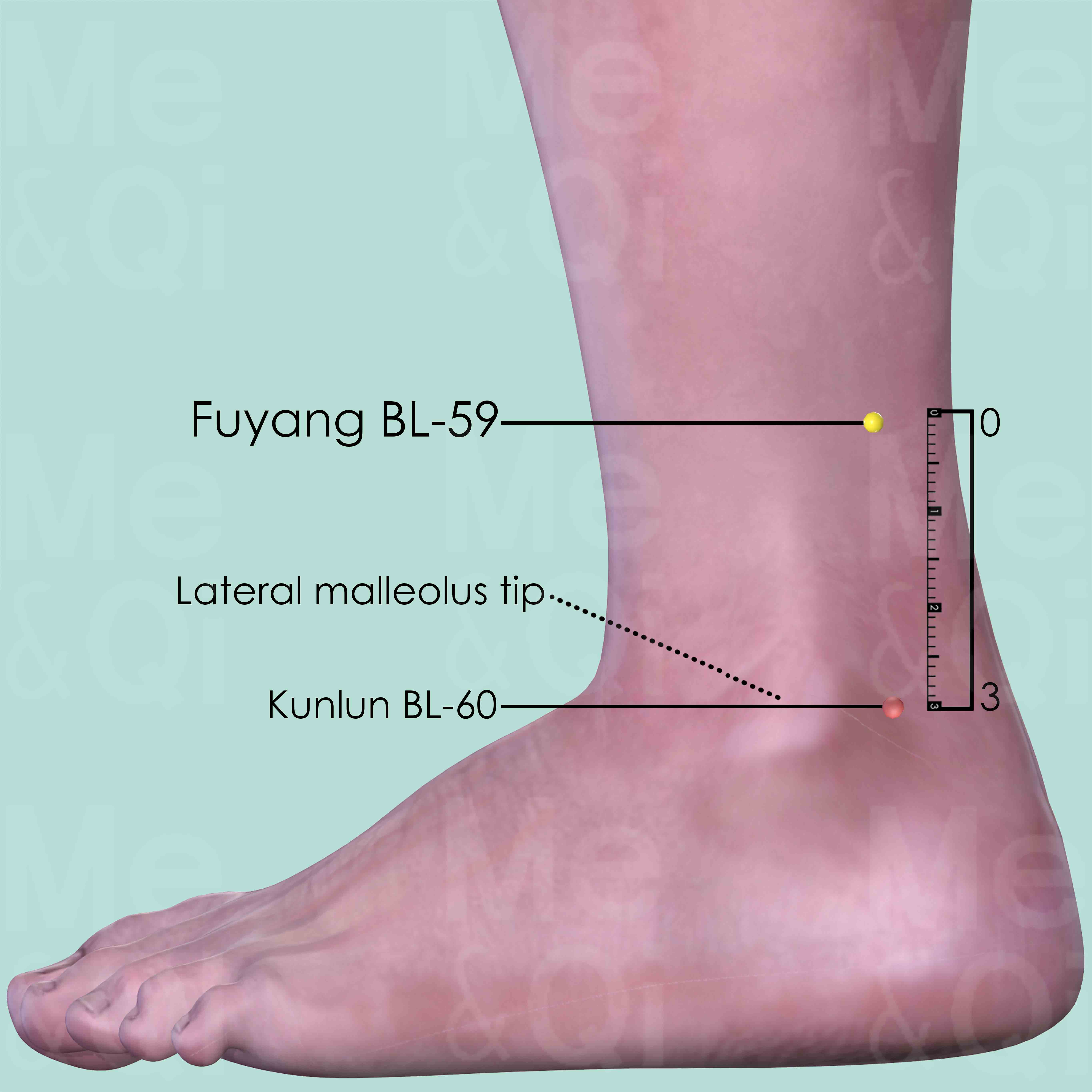Leg Atrophyaccording to TCM
Symptom family: Legs disorders and Symptoms
What is Leg Atrophy?
Leg atrophy refers to a significant decrease in muscle mass and strength in the legs. This condition encompasses a range of symptoms such as lower limbs atrophy, muscle wasting, and thinning of leg muscles. It can occur due to various reasons including prolonged inactivity, nerve damage, muscular diseases, or neurological disorders. This loss of muscle mass not only affects the appearance of the legs but also impairs mobility and daily functioning.
How does TCM View Leg Atrophy?
In Traditional Chinese Medicine (TCM), leg atrophy is often viewed through the lens of Qi (vital energy) and Blood imbalances or blockages. According to TCM theory, the health of muscles is closely related to the Channels around the body, as well as the flow of Qi and Blood.
Conditions such as external Wind-Damp invasion or Deficiencies in Channels can lead to muscle wasting. TCM practitioners assess these underlying imbalances to provide a holistic treatment approach.
Acupoints for Leg Atrophy
TCM advocates the use of acupuncture for managing leg atrophy, targeting specific acupoints to enhance muscle strength and vitality. Acupoints along the Gall Bladder, Stomach, and Bladder meridians are commonly used for this purpose. For instance, Fengshi (GB-31) and Guangming (GB-37) on the Gall Bladder Channel are known for their ability to expel Wind and remove obstructions, which can be beneficial in cases of leg atrophy. Similarly, points such as Biguan (ST-31) and Tiaokou (ST-38) on the Stomach Channel are selected to address issues related to the Small Intestine and to expel Wind-Damp from the channels.
In the Bladder Channel, acupoints like Feiyang (BL-58) and Zhongliao (BL-33) are emphasized for their roles in strengthening the Kidneys and facilitating the smooth flow of Qi and Blood in the lower body. Moreover, Extra Points like Xiyan (EX-LE-5), comprising Dubi (ST-35) and Neixiyan (EX-LE-4), are also utilized for their efficacy in treating leg atrophy by expelling Wind-Damp and reducing swelling and pain.
The strategic use of these acupoints in acupuncture therapy aims to improve circulation and nourishment to the leg muscles, thereby aiding in the recovery and strengthening of the atrophied muscles.
Explore below some acupoints used to address leg atrophy, organized by meridian.
- By Meridian
- Gall Bladder Channel
- Stomach Channel
- Bladder Channel
- Extra Points: Lower Extremities (EX-LE)
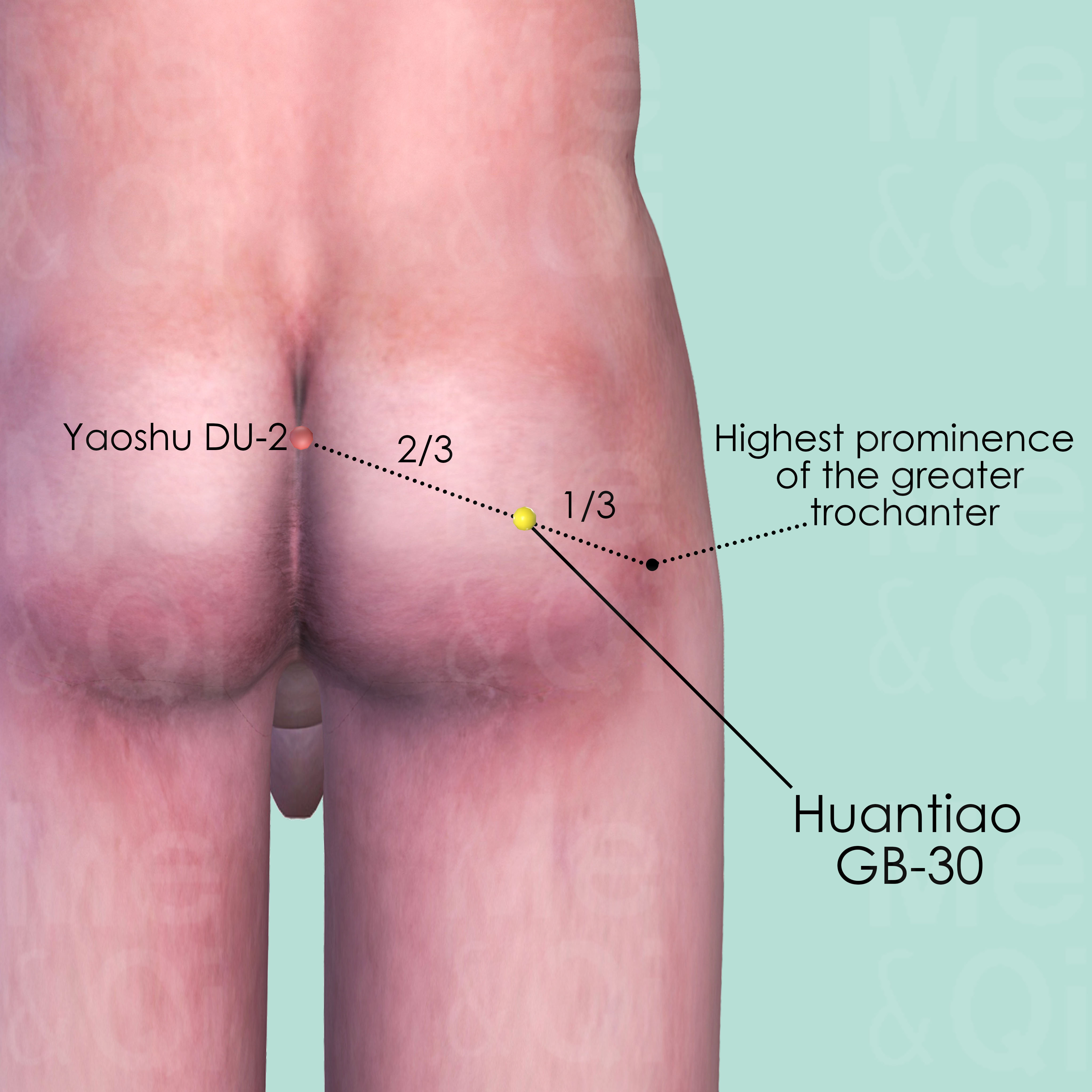
Huantiao GB-30
At the junction of the middle and lateral third of the distance between the great trochanter and Yaoshu DU-2 of the hiatus of the sacrum. When locating the point, put the patient in lateral recumbent position with the thigh flexed.
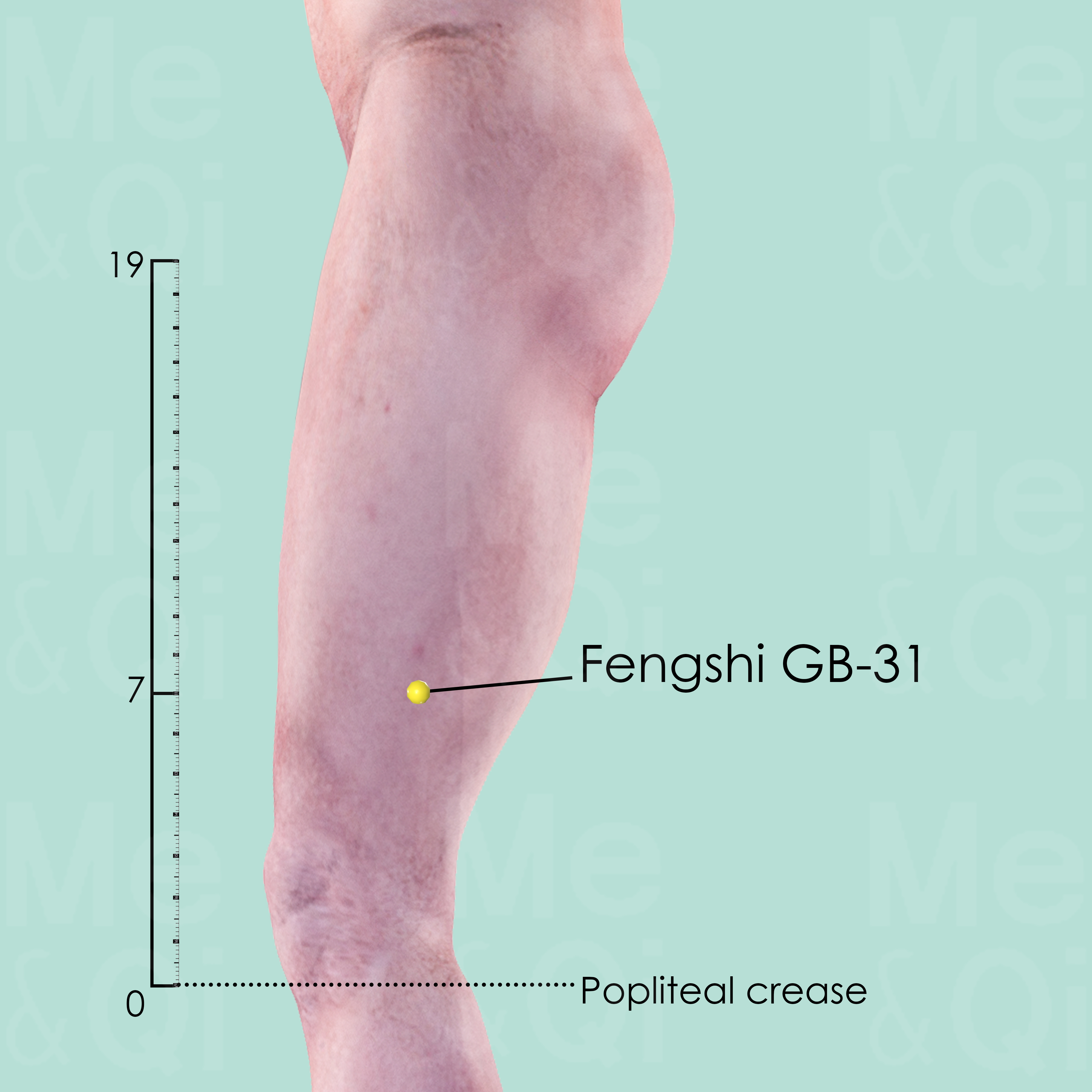
Fengshi GB-31
On the midline of the lateral aspect of the thigh, 7 cun above the transverse politeal crease.
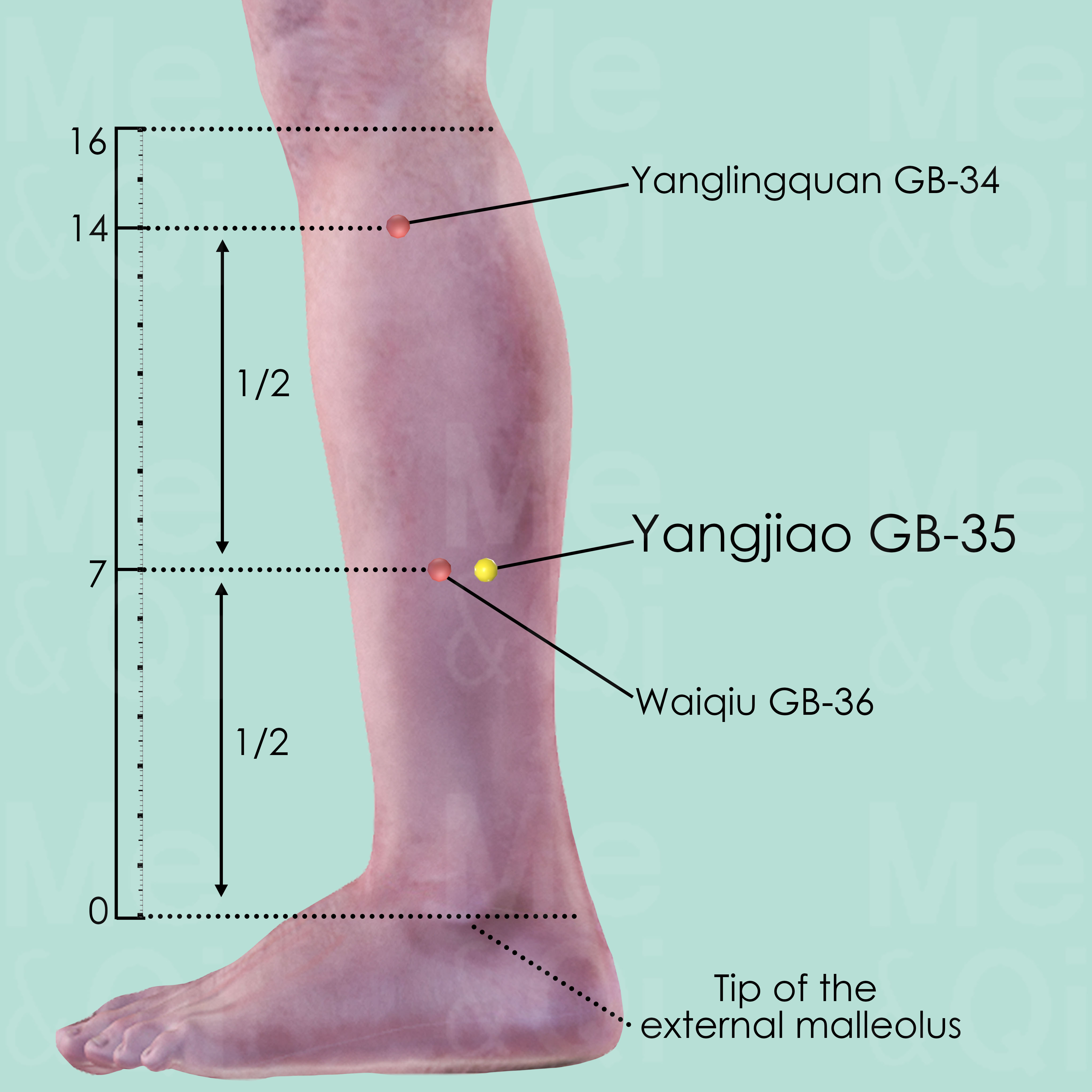
Yangjiao GB-35
7 cun above the tip of the external malleolus, on the posterior border of the fibula, within the distance between the tip of the external malleolus and Yanglingquan GB-34. It is also at the same level as Waiqiu GB-36.
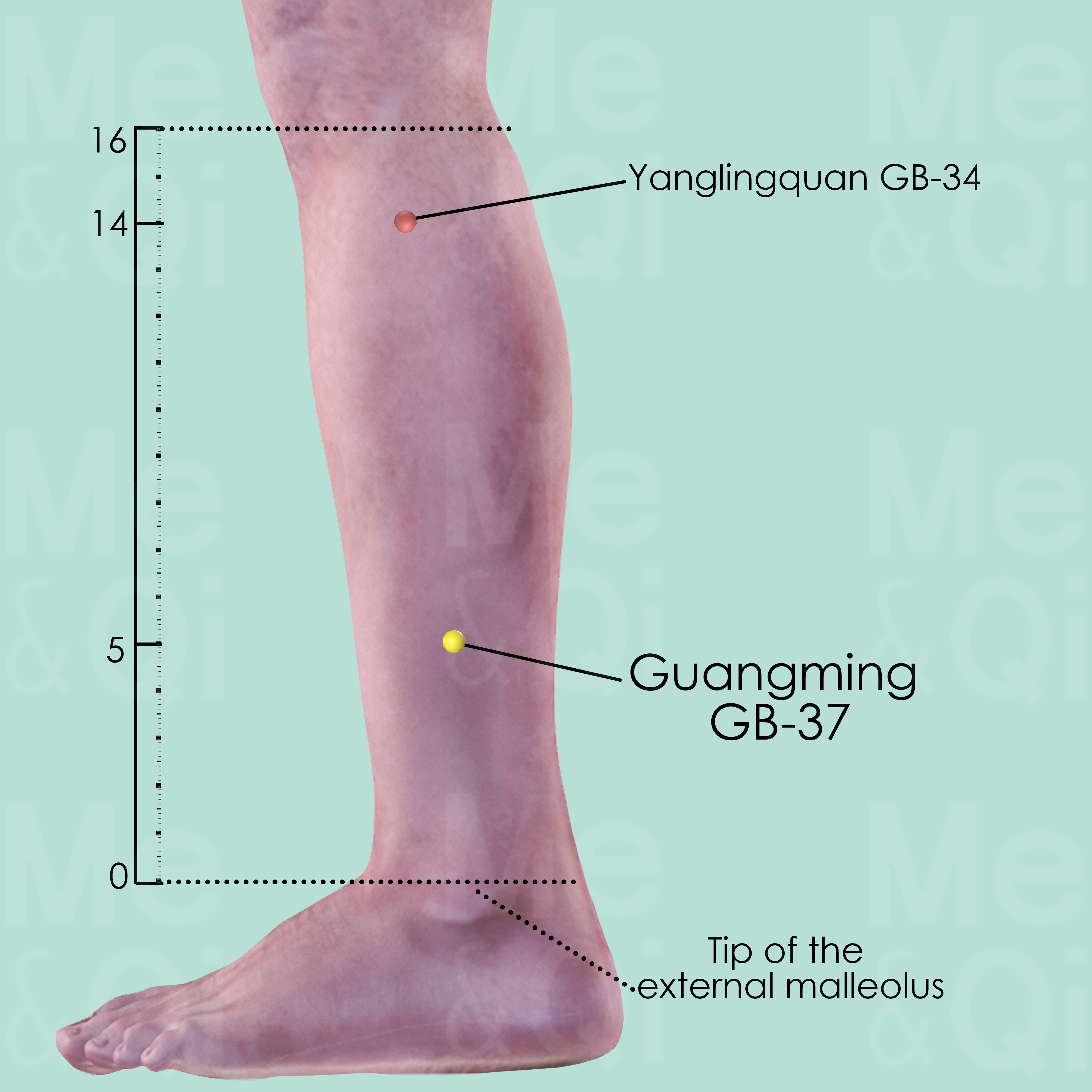
Guangming GB-37
5 cun directly above the tip of the external malleolus, on the anterior border of the fibula.
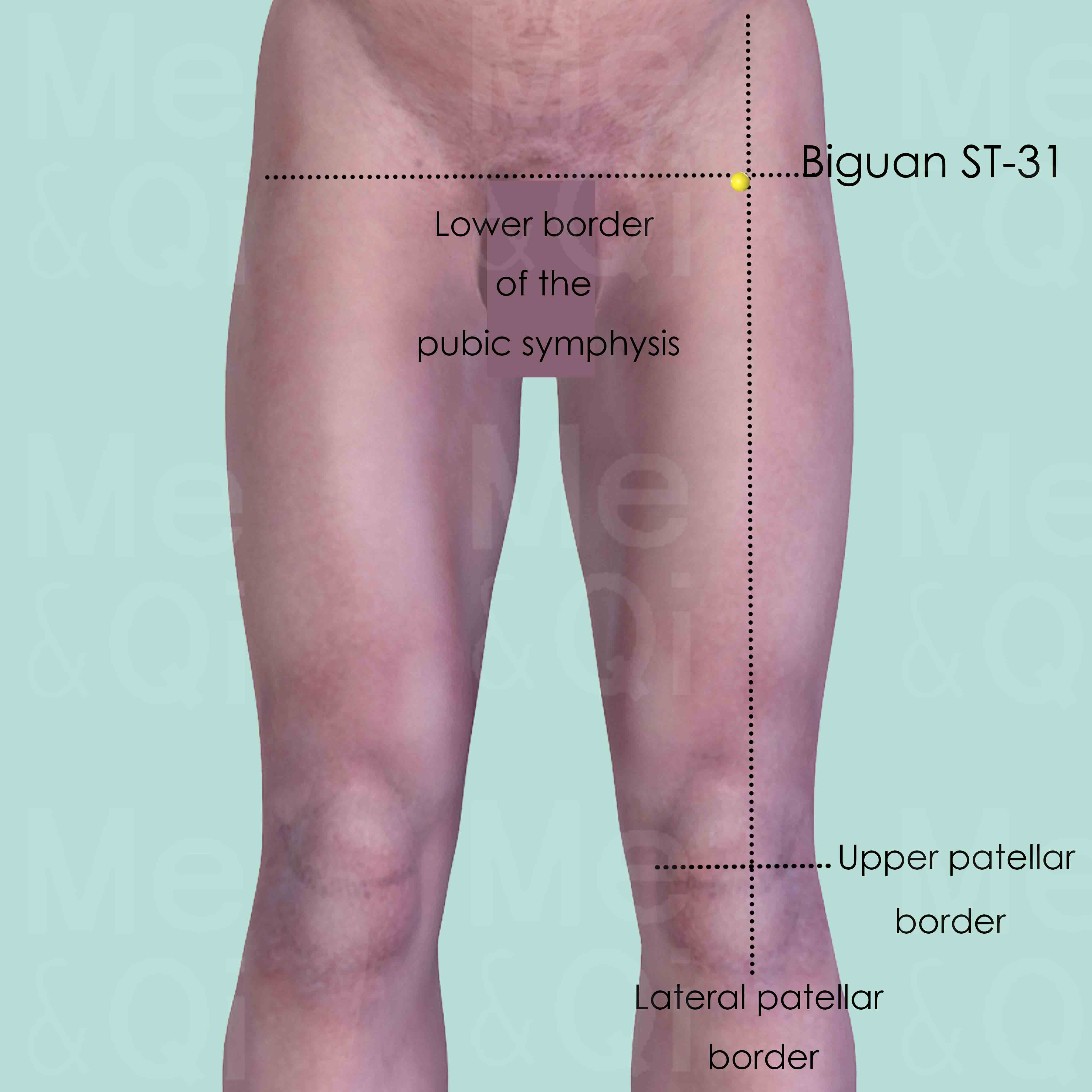
Biguan ST-31
Directly below the anterior superior iliac spine (ASIS), at the level of the lower border of the pubic symphysis, in the depression on the lateral side of sartorius muscle when the thigh is flex.
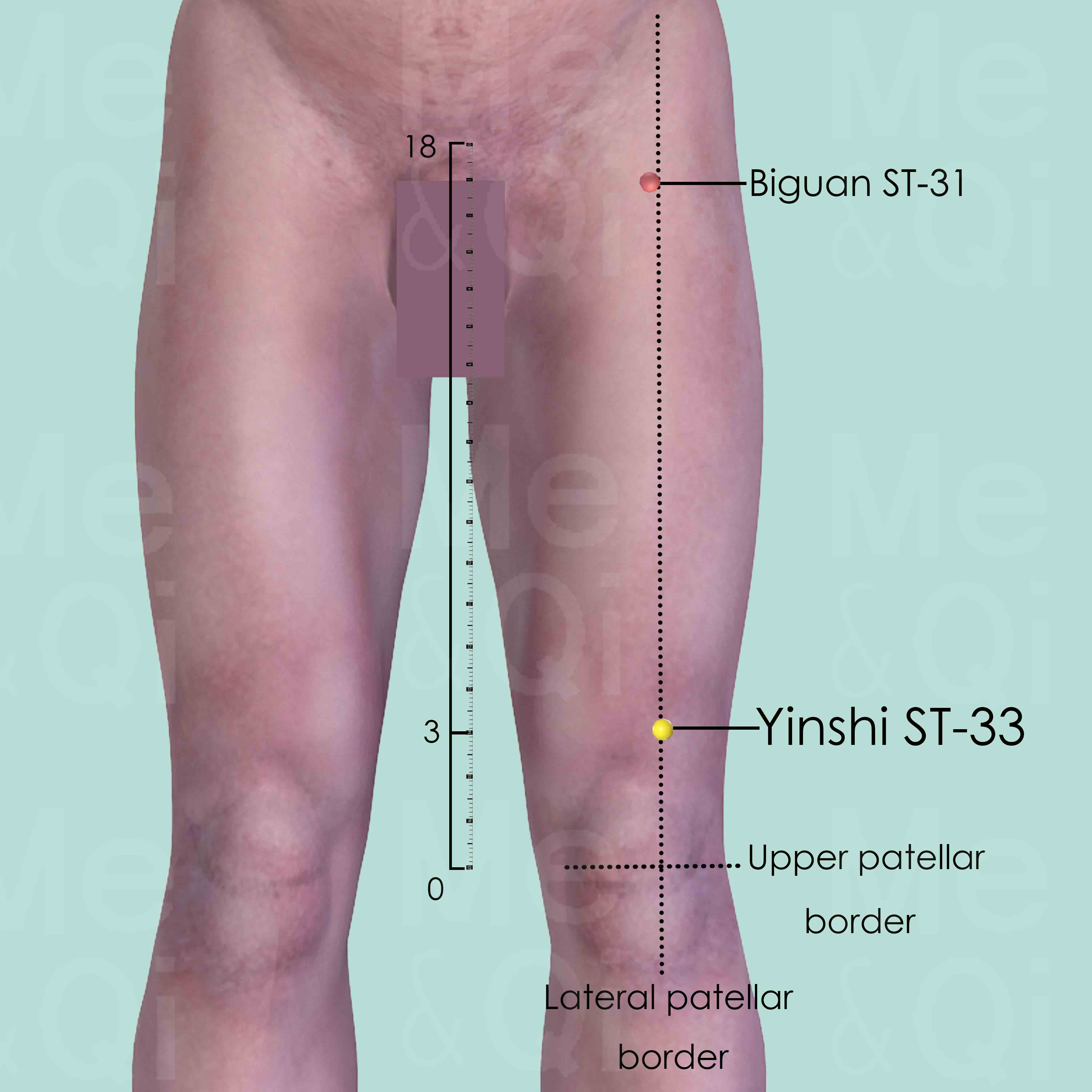
Yinshi ST-33
3 cun above the upper-lateral border of the patella, on a line between the lateral patellar border and the anterior superior iliac spine (ASIS).
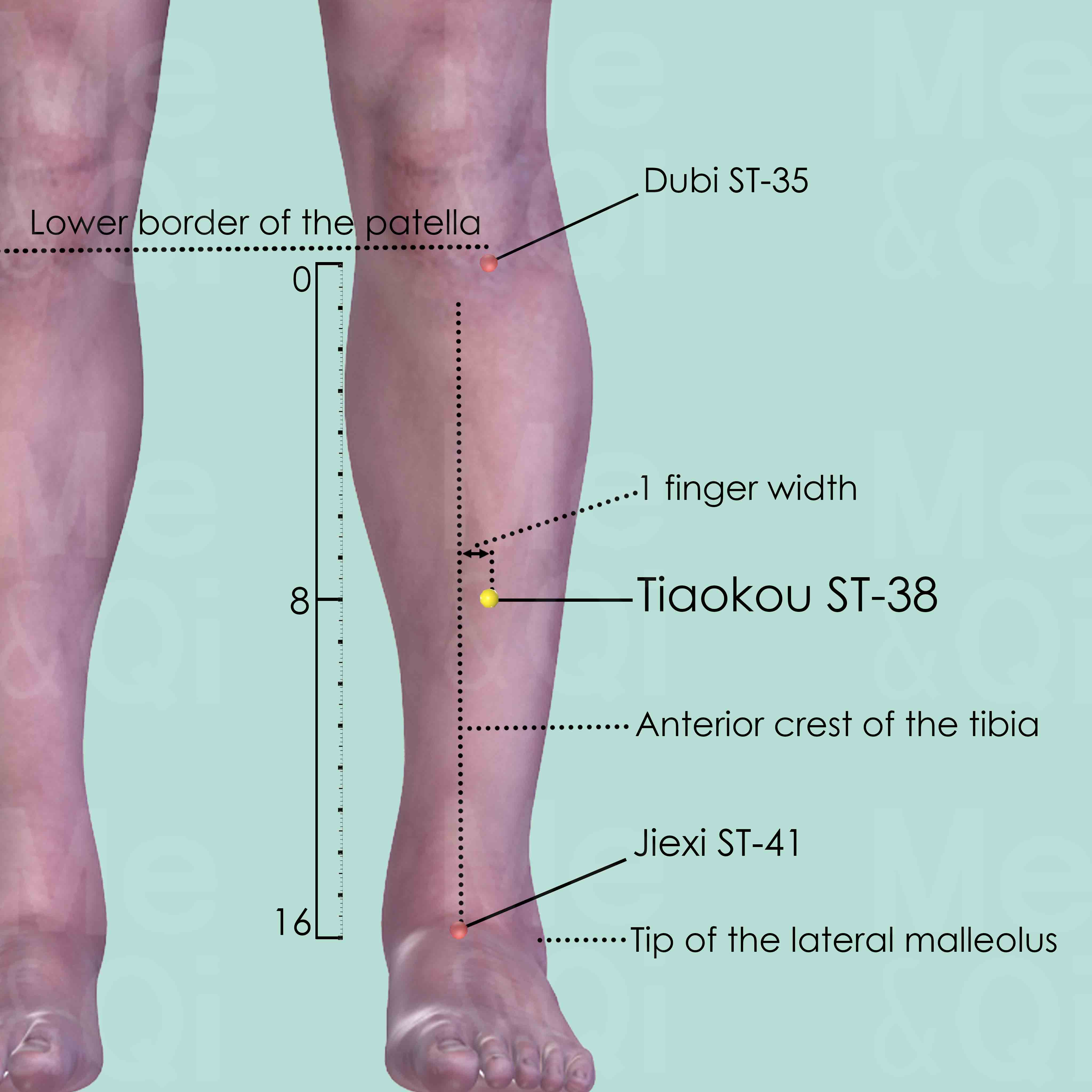
Tiaokou ST-38
8 cun below Dubi ST-35, midway between Dubi ST-35 and Jiexi ST-41, one middle finger-width from the anterior crest of the tibia.
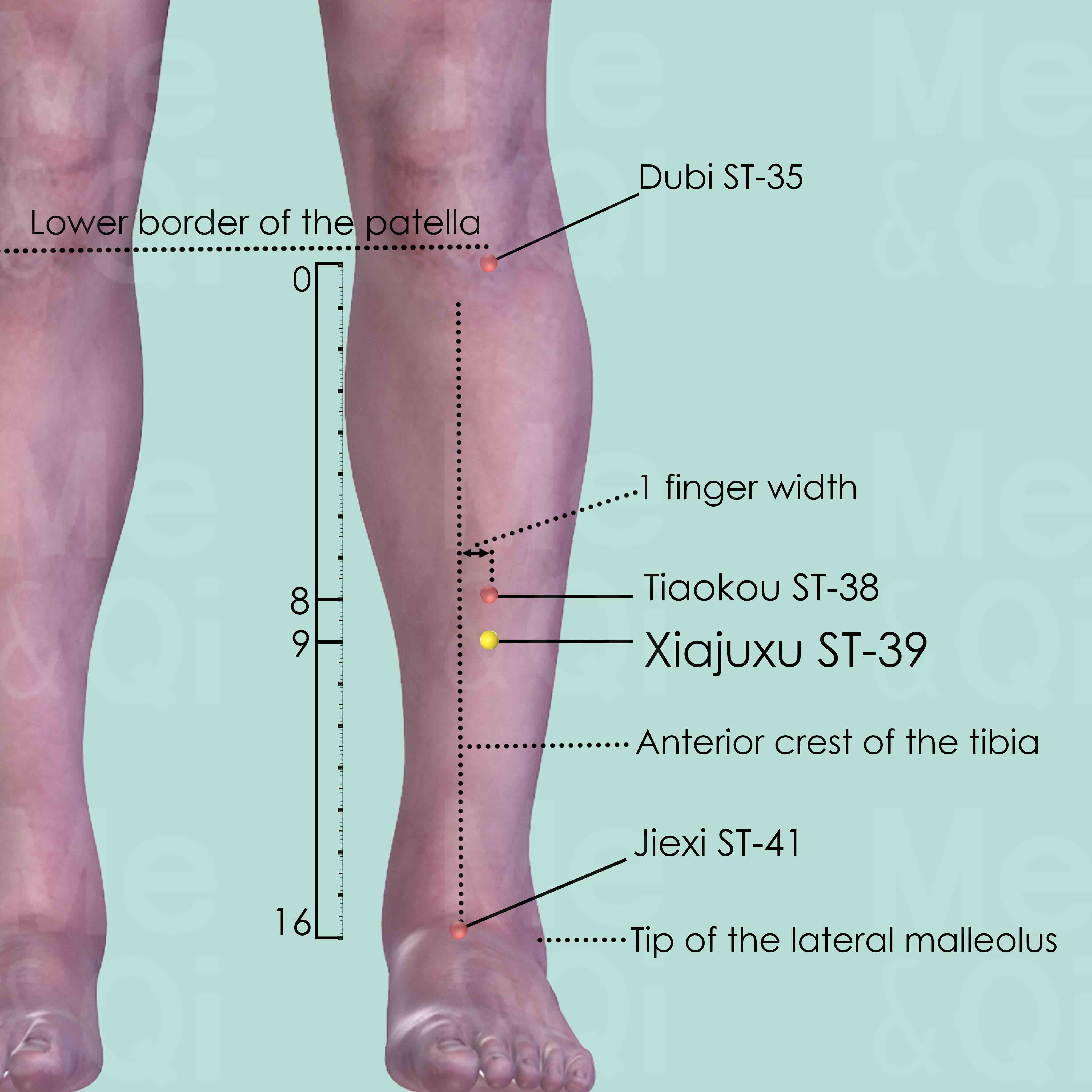
Xiajuxu ST-39
9 cun below Dubi ST-35, about one middle finger-width lateral to the anterior crest of the tibia.
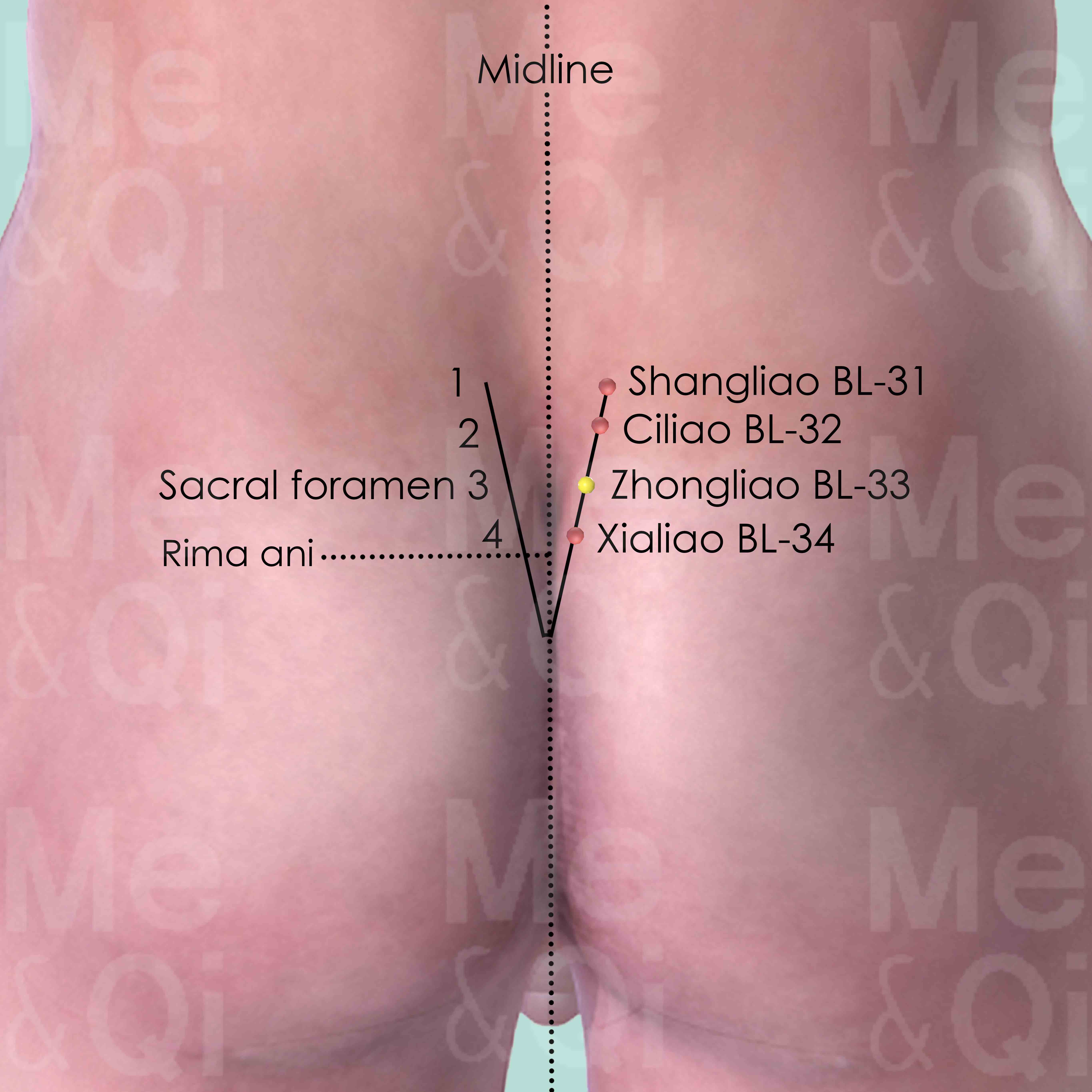
Zhongliao BL-33
In the 3rd posterior sacral foramen, between the posterior superior iliac spine and the midline.
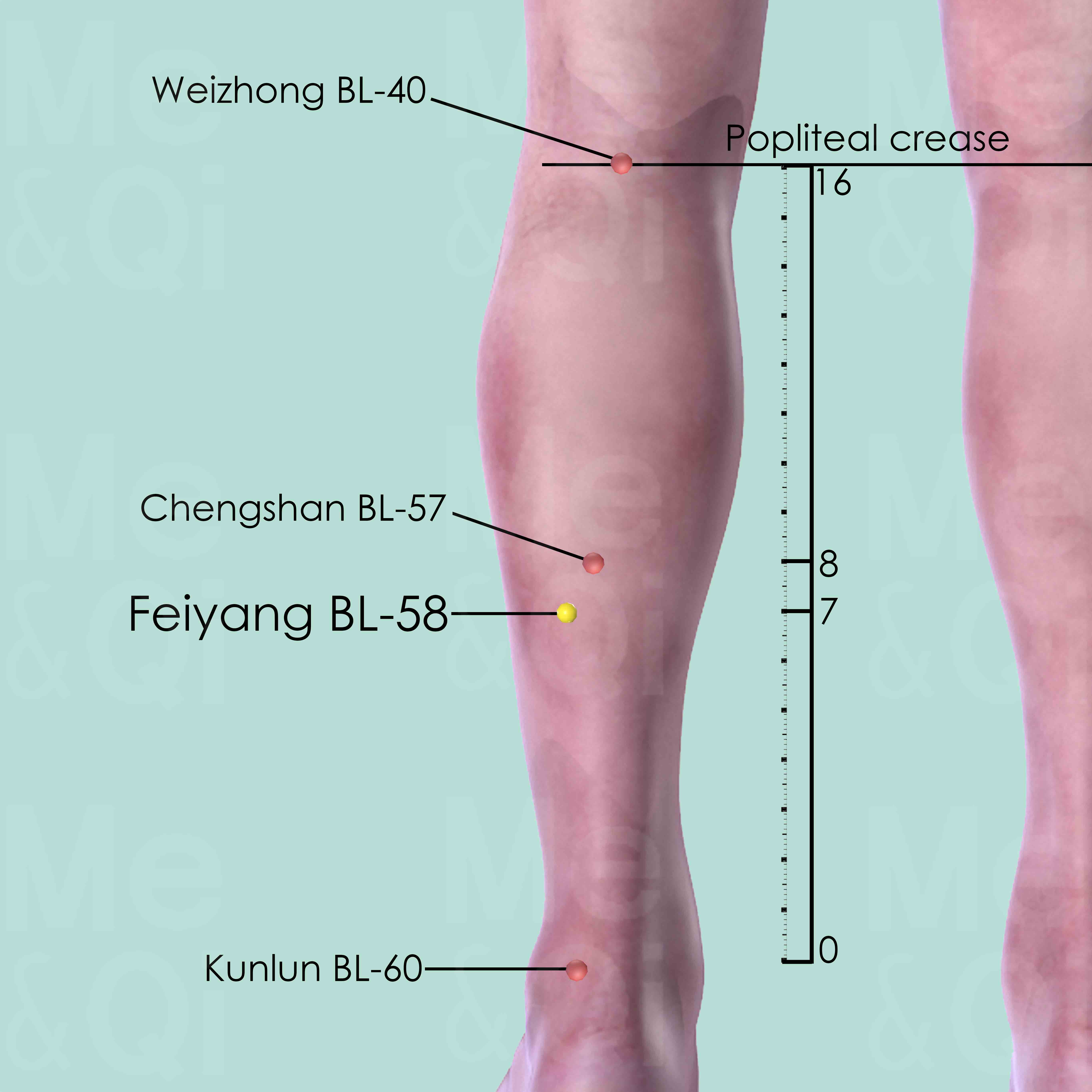
Feiyang BL-58
On the posterior border of fibula, about 1 cun inferior and lateral to Chengshan BL-57, 7 cun directly above Kunlun BL-60.
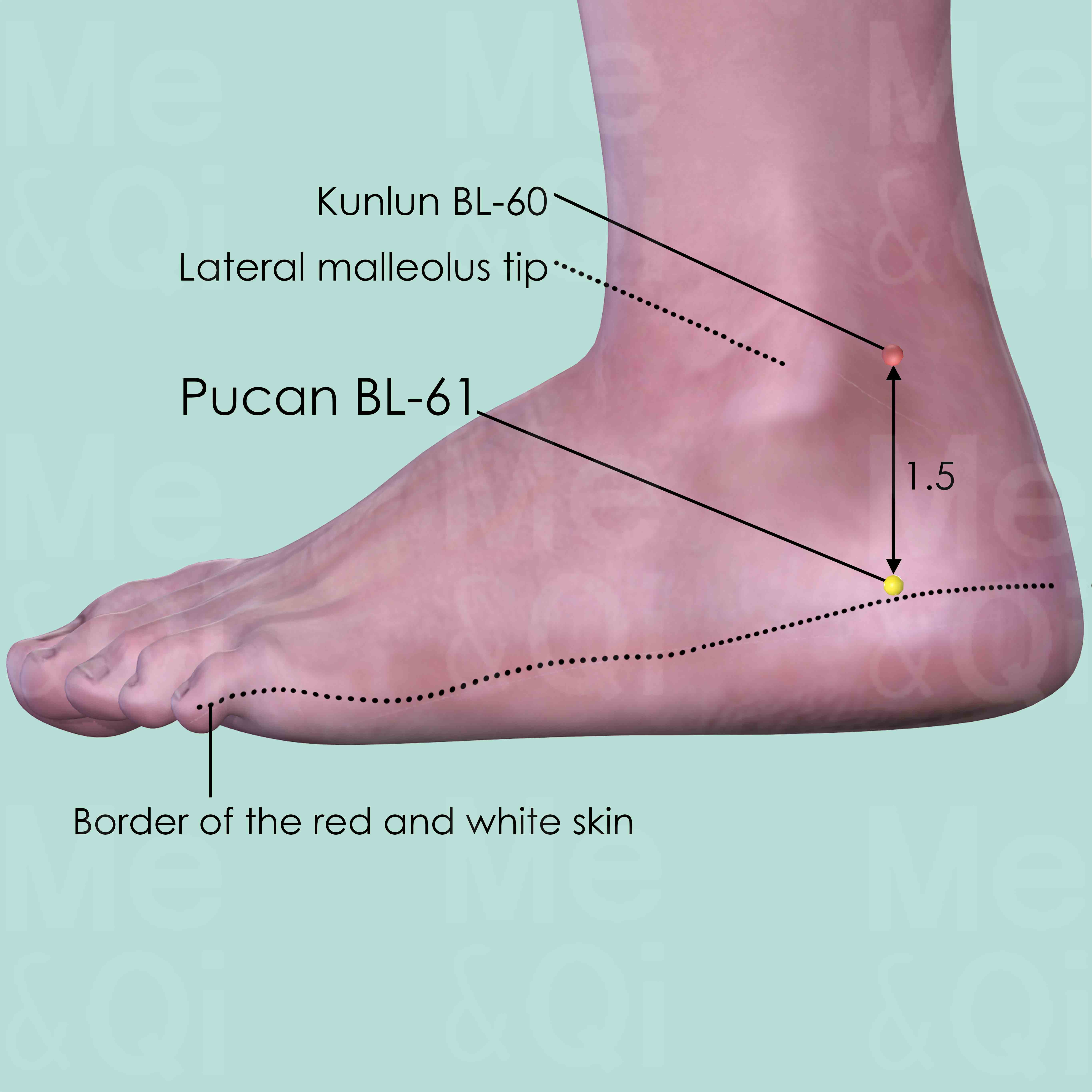
Pucan BL-61
Posterior and inferior to the external malleolus, directly below Kunlun BL-60, in the depression of the calcaneum at the junction of the red and white skin.
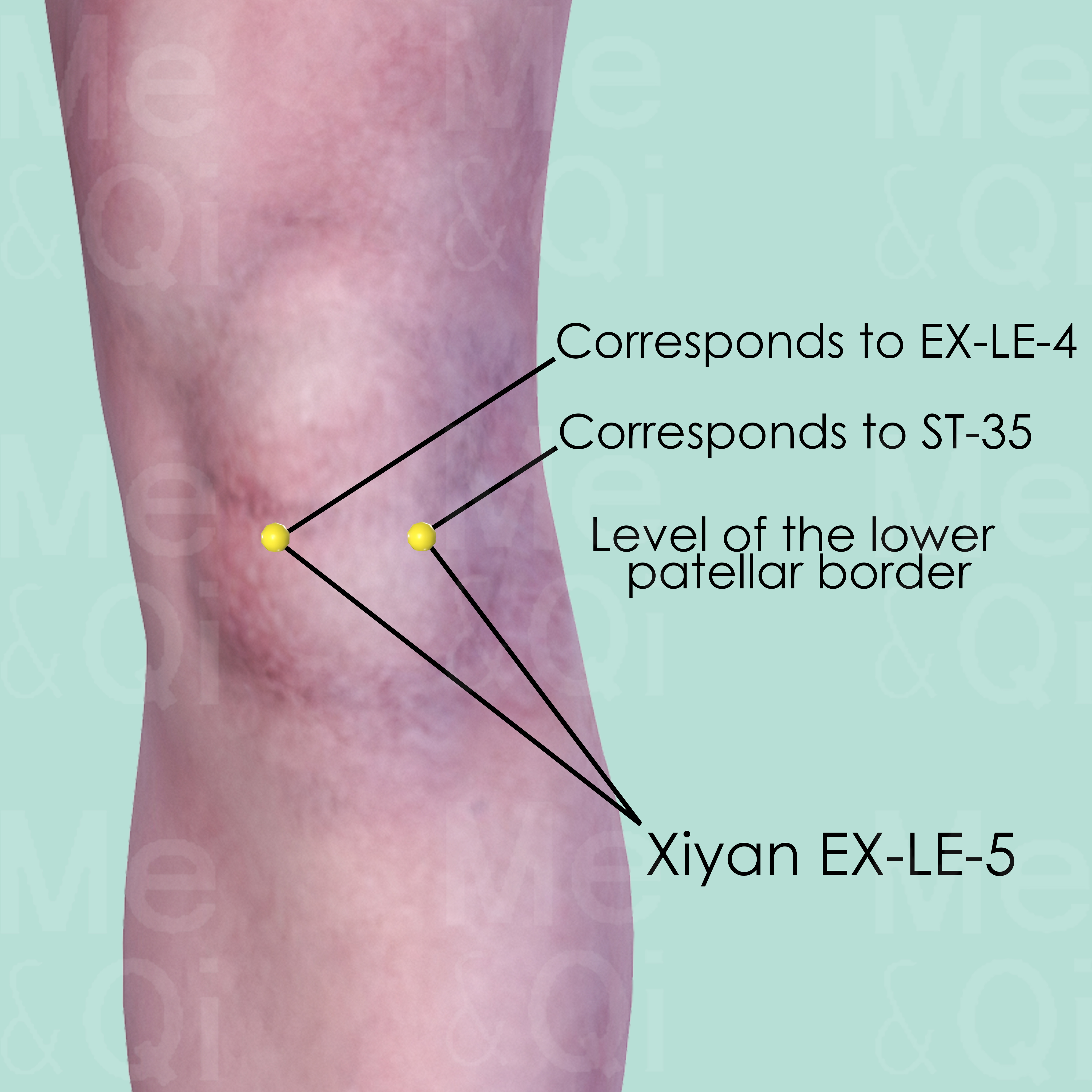
Xiyan EX-LE-5
This is a group of 2 points, composed of Dubi ST-35 and Neixiyan EX-LE-4. Both are located inferior to the patella, medial and lateral to the patellar ligament. Dubi ST-35 is the lateral one, while Neixiyan EX-LE-4 is the medial one.

